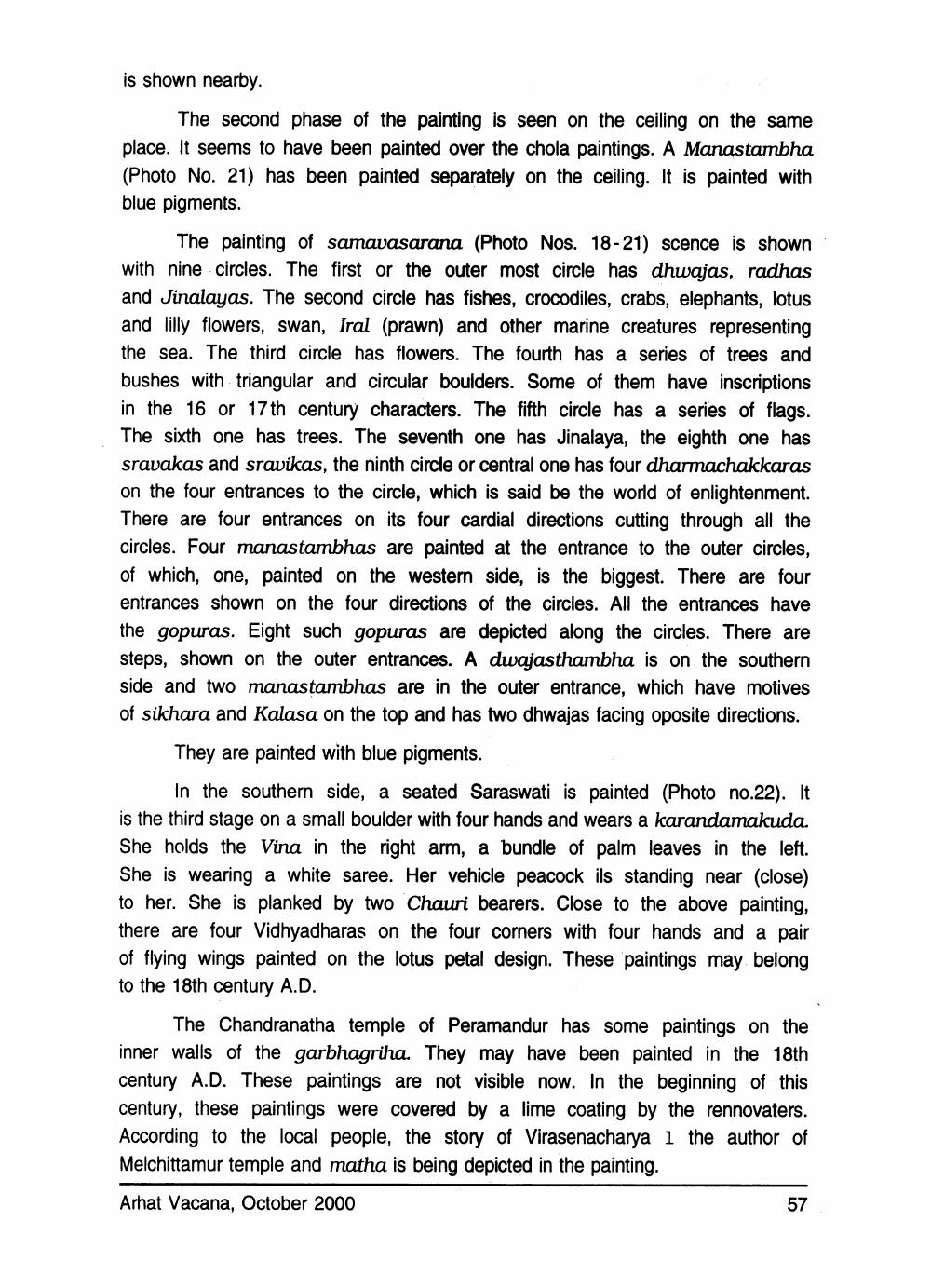________________
is shown nearby.
The second phase of the painting is seen on the ceiling on the same. place. It seems to have been painted over the chola paintings. A Manastambha (Photo No. 21) has been painted separately on the ceiling. It is painted with blue pigments.
The painting of samavasarana (Photo Nos. 18-21) scence is shown with nine circles. The first or the outer most circle has dhwajas, radhas and Jinalayas. The second circle has fishes, crocodiles, crabs, elephants, lotus and lilly flowers, swan, Iral (prawn) and other marine creatures representing the sea. The third circle has flowers. The fourth has a series of trees and bushes with triangular and circular boulders. Some of them have inscriptions in the 16 or 17th century characters. The fifth circle has a series of flags. The sixth one has trees. The seventh one has Jinalaya, the eighth one has sravakas and sravikas, the ninth circle or central one has four dharmachakkaras on the four entrances to the circle, which is said be the world of enlightenment. There are four entrances on its four cardial directions cutting through all the circles. Four manastambhas are painted at the entrance to the outer circles, of which, one, painted on the westem side, is the biggest. There are four entrances shown on the four directions of the circles. All the entrances have the gopuras. Eight such gopuras are depicted along the circles. There are steps, shown on the outer entrances. A dwajasthambha is on the southern side and two manastambhas are in the outer entrance, which have motives of sikhara and Kalasa on the top and has two dhwajas facing oposite directions.
They are painted with blue pigments.
In the southem side, a seated Saraswati is painted (Photo no.22). It is the third stage on a small boulder with four hands and wears a karandamakuda. She holds the Vina in the right arm, a bundle of palm leaves in the left. She is wearing a white saree. Her vehicle peacock ils standing near (close) to her. She is planked by two Chauri bearers. Close to the above painting, there are four Vidhyadharas on the four comers with four hands and a pair of flying wings painted on the lotus petal design. These paintings may belong to the 18th century A.D.
The Chandranatha temple of Peramandur has some paintings on the inner walls of the garbhagriha. They may have been painted in the 18th century A.D. These paintings are not visible now. In the beginning of this century, these paintings were covered by a lime coating by the rennovaters. According to the local people, the story of Virasenacharya 1 the author of Melchittamur temple and matha is being depicted in the painting.
Arhat Vacana, October 2000
57




